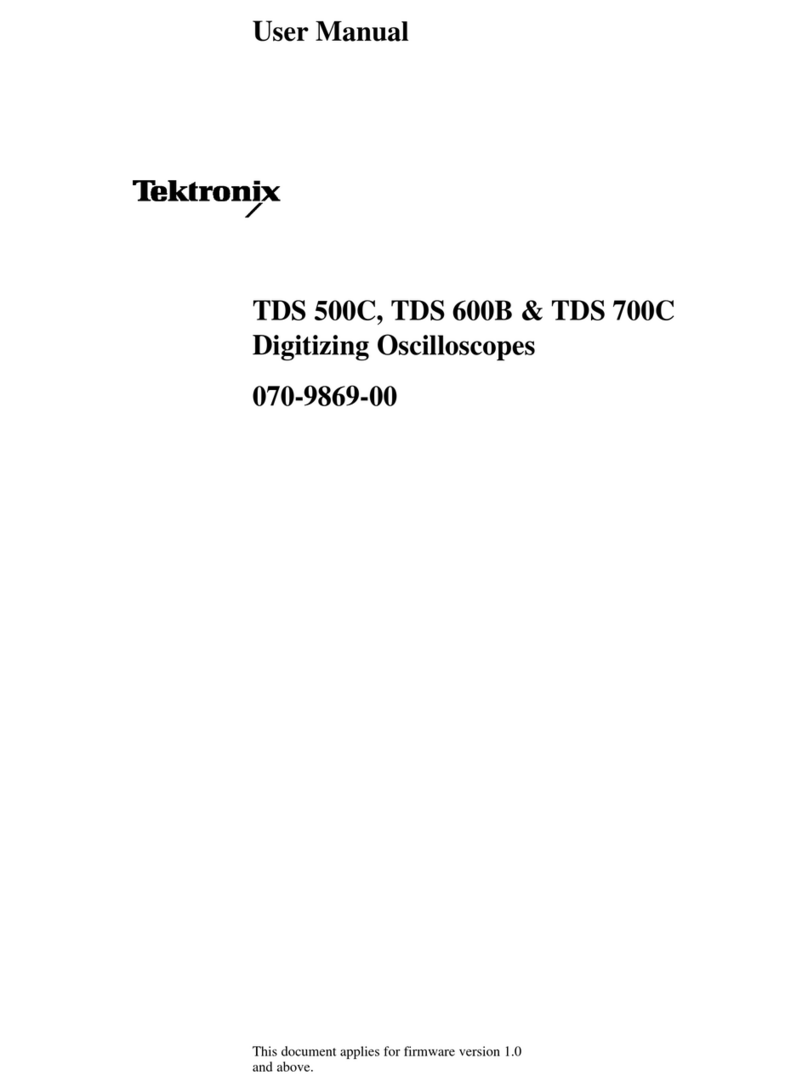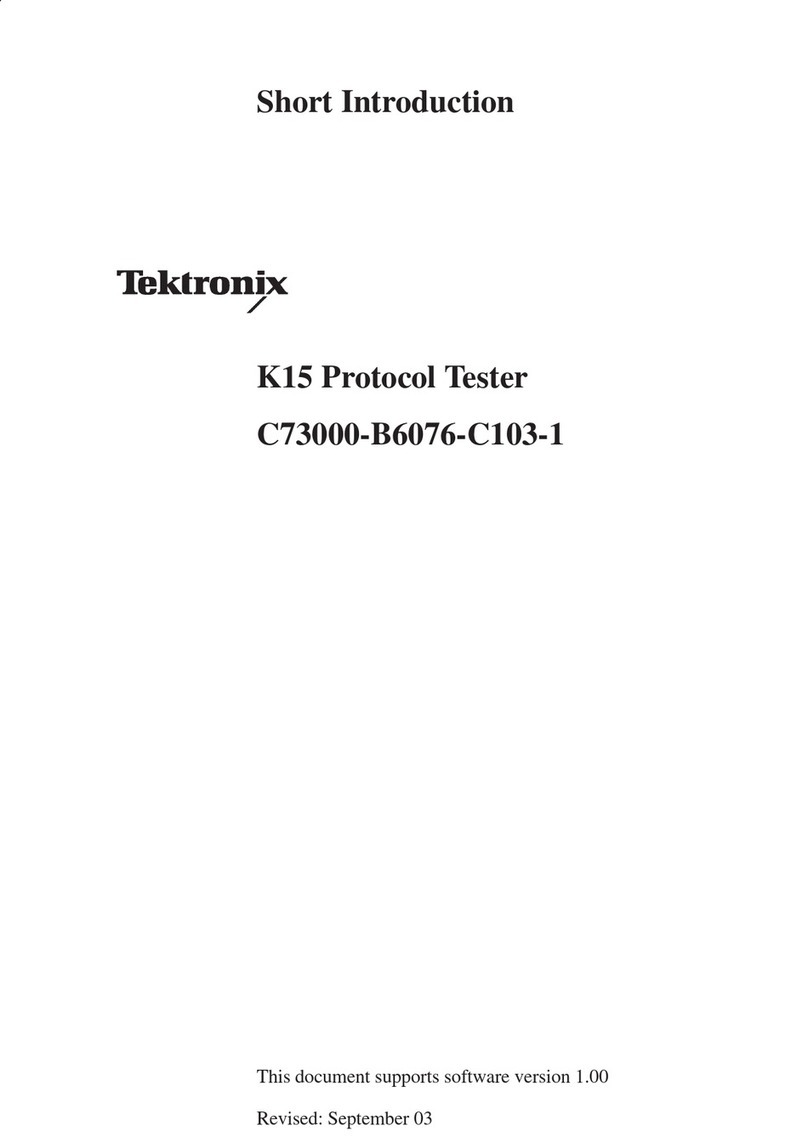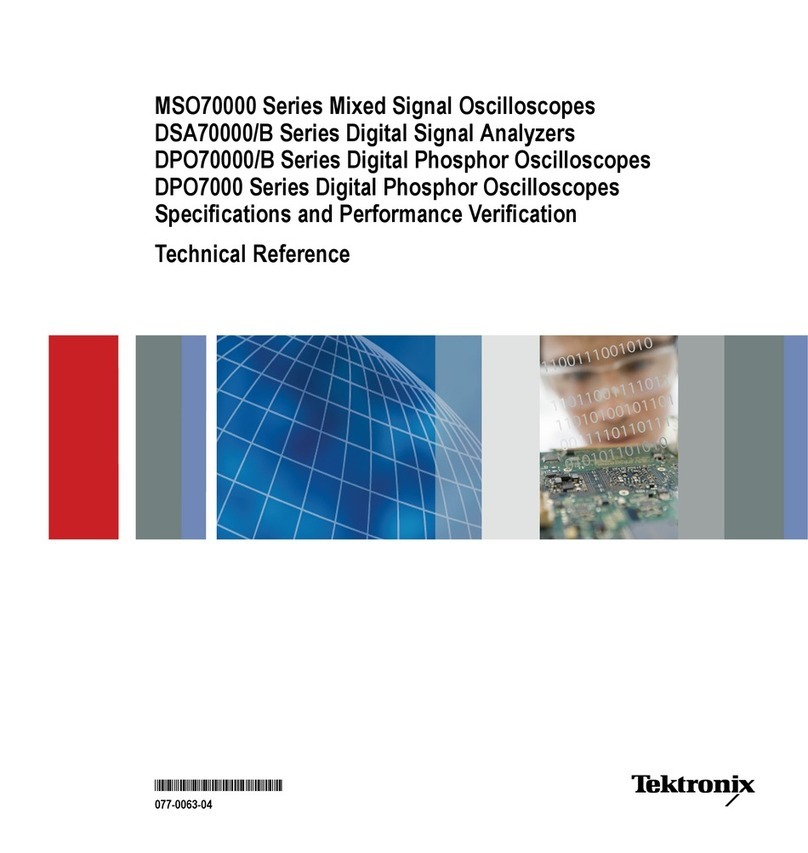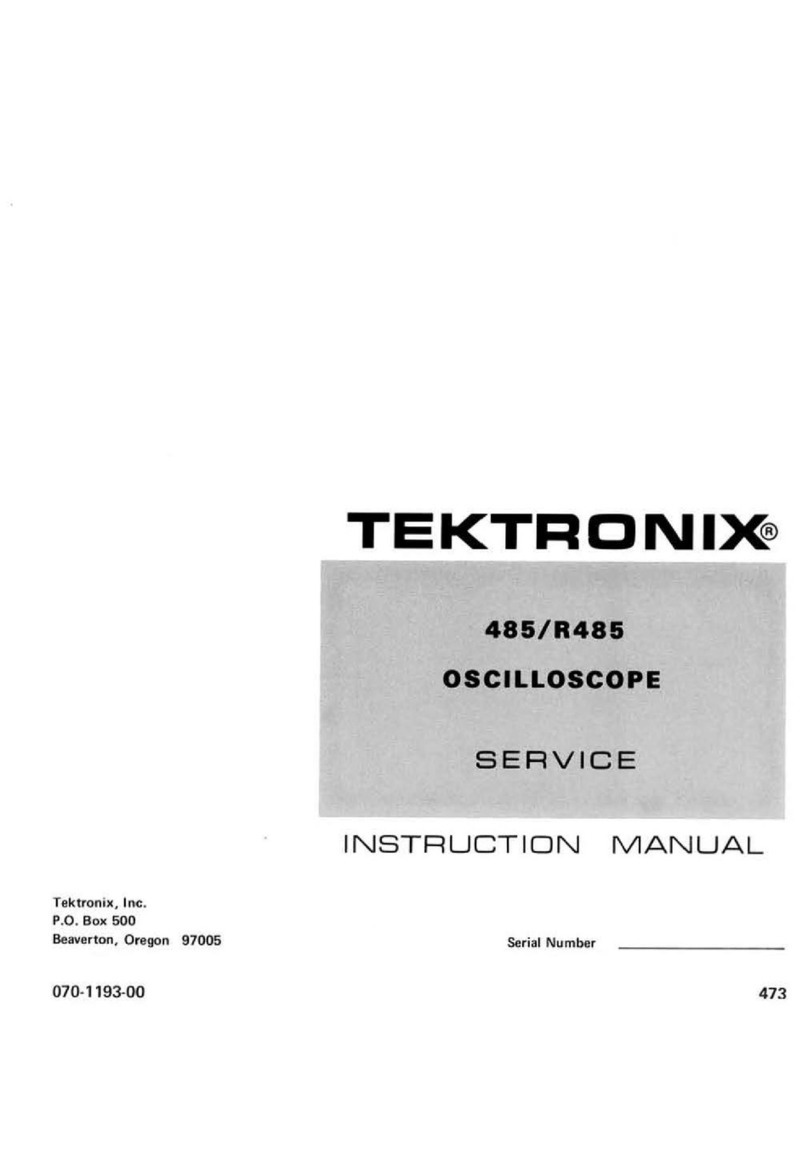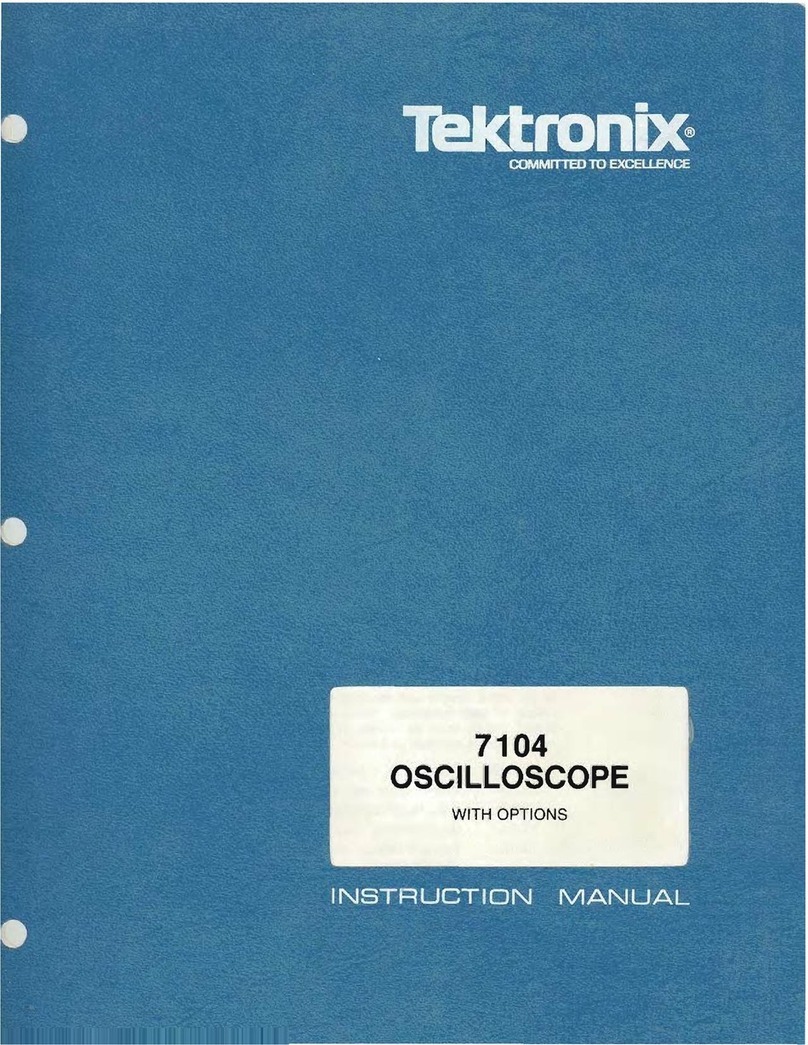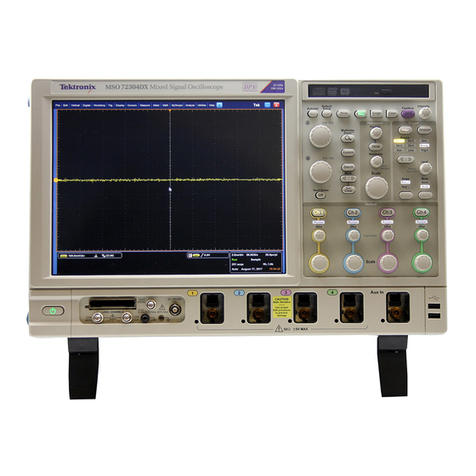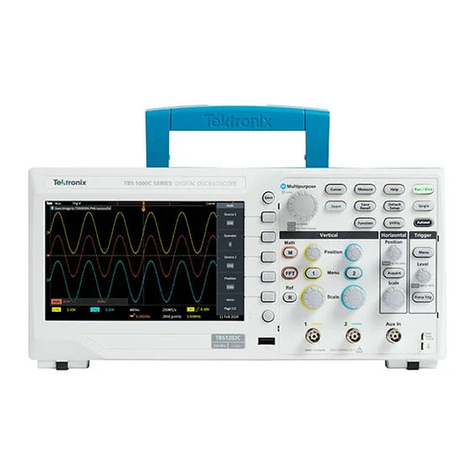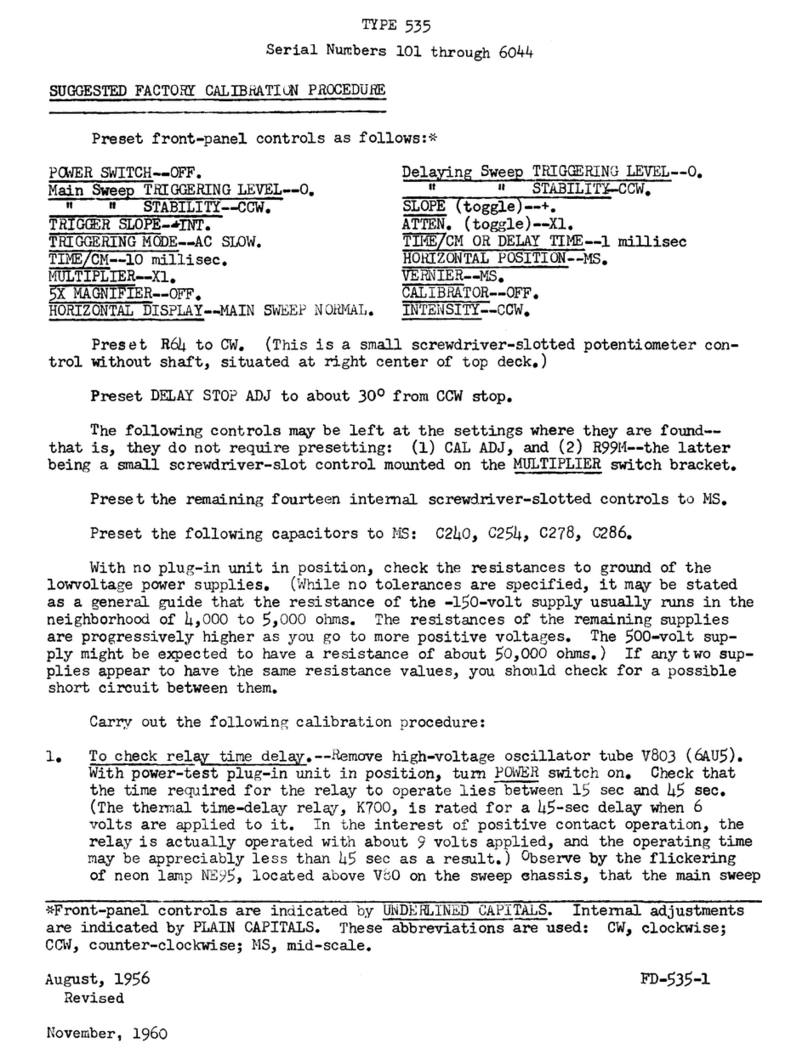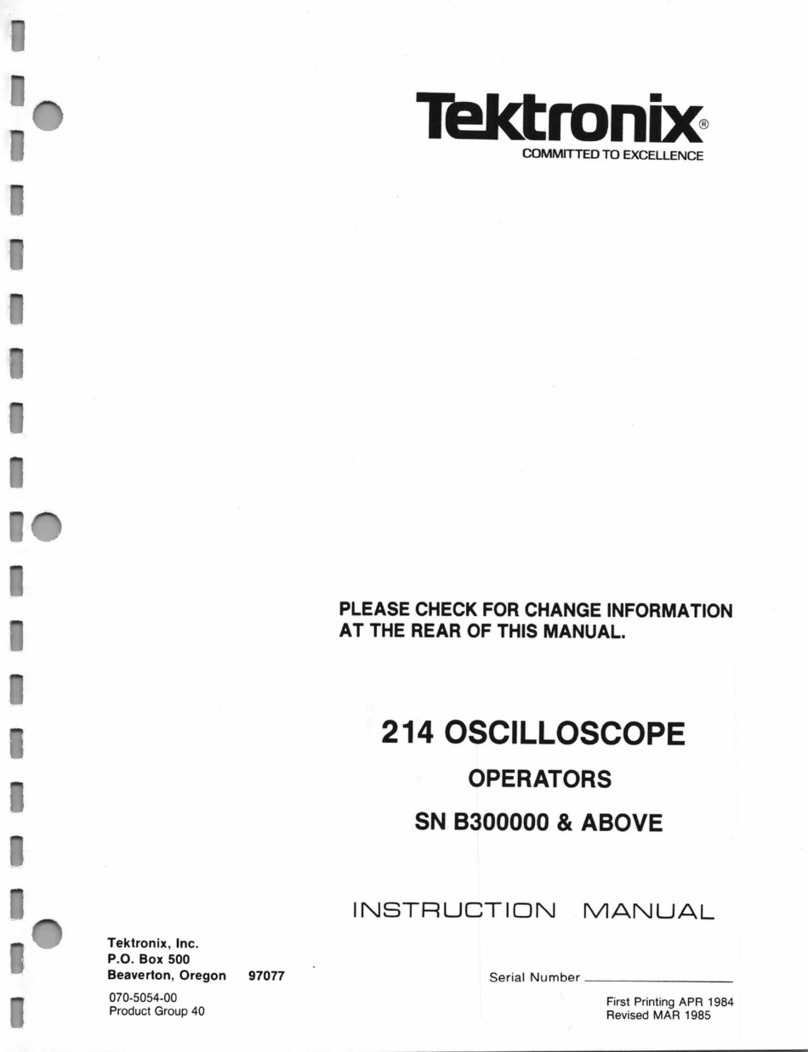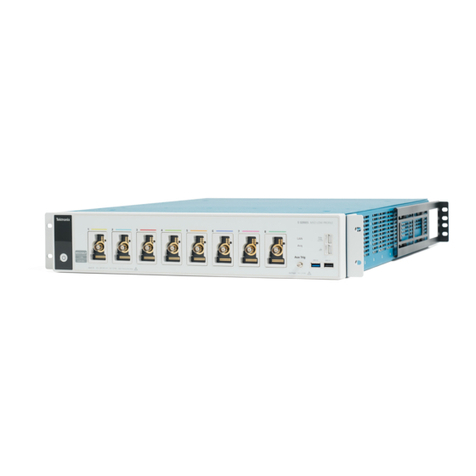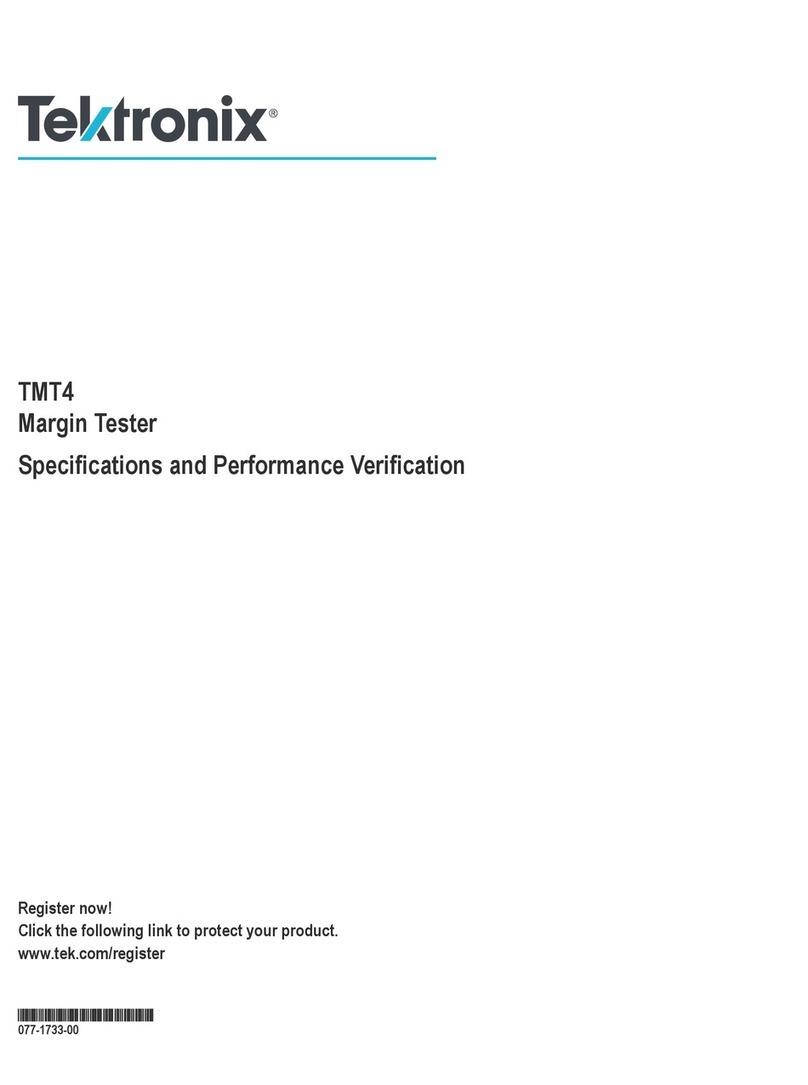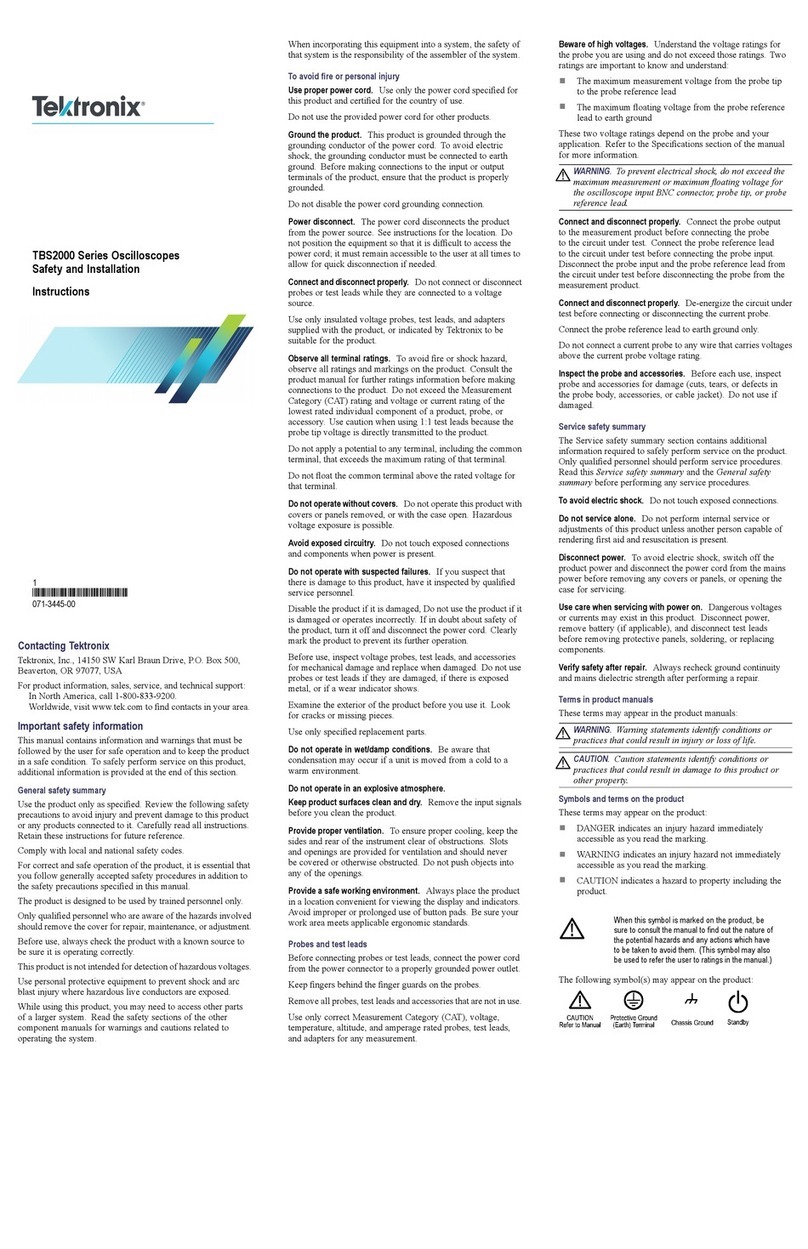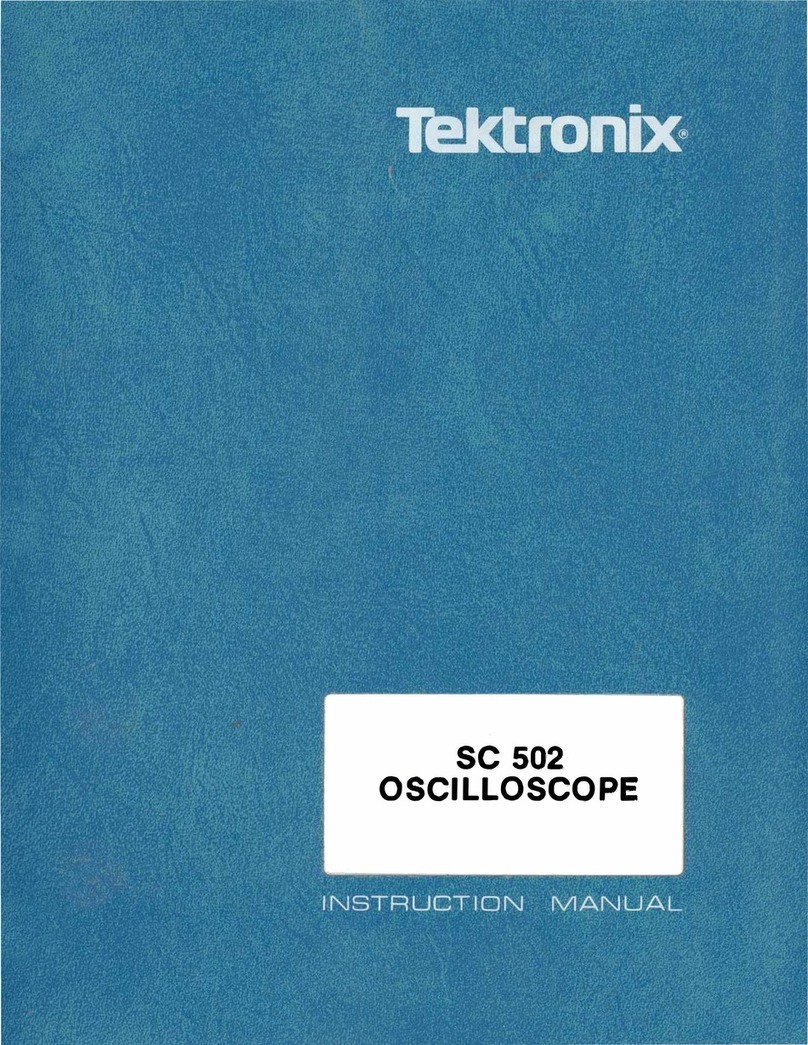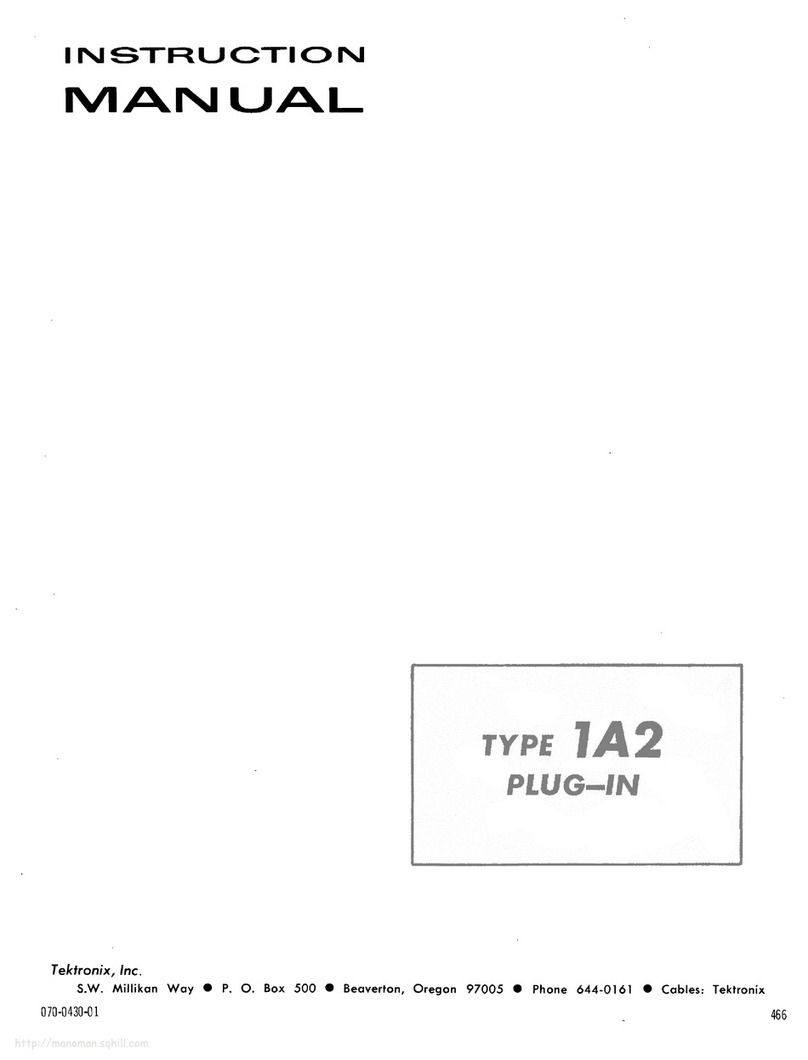
GENERAL DESCRIPTION
General
The
'fektronix
Type
524AD is a
portable,
self-
contained
cathode-ray
oscilloscope specifically
designed
for
maintenance
and
adjustment
of
tele-
vision
transmitters
and
studio
equipment.
With
this
oscilloscope,
any
portion
of
the
tele-
vision
picture
can
be
observed,
from
complete
frames
to
small
portions
of
individual lines.
Any
one
of
the
525 lines in
the
picture
can
be
select-
ed
and
observed
in detail.
Internally-generated
time
markers
facilitate
sync-pulse
timing.
The
wide-band
vertical
amplifier
is
provided
with
a
network
that
can
be
switched
in
to
limit
the
high-frequency
response
to
that
recommended
by
the
IRE
Standards
Committee
for
stand-
ardized
pulse-level
measurements.
A second
switch
position
adds
high-frequency
compensa-
tion
to
make
flat
frequency
response
to
5 me,
within
one
per
cent,
but
at
the
sacrifice
of
best
transient
response.
The
vertical
amplifier
has
a
bandwidth
to
10
megacycles, a
de
sensitivity
to
0.15
volts
per
centimeter,
and
an
ac
sensitivity
increased
by
a
lOX ac-coupled
preamplifier
to
0.015
volts
per
centimeter.
A built-in
variable-duty-cycle
cali-
brator
aids
in pulse-level
measurements.
The
sweep
system
provides
calibrated
sweeps
as
fast
as
0.1
microsecond
per
centimeter,
in-
cludes a
3X
and
lOX magnifier, a television
composite-video-signal
sync
separator,
and
a
variable
delayed
sweep.
The
unblanking
pulse
is
de
coupled.
Characteristics
SWEEP
CIRCUIT
Hard-tube
type,
triggered
or
recurrent
opera-
tion
as
desired.
SWEEP-TIME
RANGE
Continuously
variable,
0.1
microsecond
per
centimeter
to
0.01
second
per
centimeter.
TRIGGER
REQUIREMENTS
TV
composite
video
signal
between
0.5
volt
and
15
volt
peak,
or
pulses 0.15
to
15
volts
peak
to
peak.
SWEEP
MAGNIFICATION
Magnifier
expands
the
trace
to
right
and
left
of
center,
either
3X
or
lOX. Magnified
sweep
speed limited
to
0.1
microsecond
per
centimeter.
EXTERNAL
SWEEP
INPUT
External
sweep
voltage
can
be
coupled
in via
100-k
potentiometer
through
de-coupled
sweep
amplifier,
with
magnification, if desired.
Hori-
zontal
positioning
included.
SINE-WAVE,
60-CYCLE
PHASED
SWEEP
This
sine-wave
sweep
is
adjustable
in ampli-
tude
and
the
phase
can
be varied
through
150
degrees. Applied via
the
sweep
amplifier.
In-
cludes
sweep-magnifier
and
horizontal-position-
ing
circuits.
TIME
MARKERS
Five
time
intervals
are
provided
of
1 µsec,
0.1
µsec, 0.05 µsec, 0.318 µsec
and
1.59 µsec. (200
markers
and
40
markers
per
television line.)
DC
UNBLANKING
The
de-coupled
unblanking
pulse
permits
the
slowest
sweeps
to
be used
with
uniform
spot
intensity
throughout
the
sweep.
VERTICAL
AMPLIFIER
Four
de-coupled
stages
provide
sensitivities
from
0.15
volts
per
centimeter.
Output
stage
is a
three-section
push-pull
distributed
amplifier.
An
ac-coupled lOX
preamplifier
can
be
switched
in for
highest
sensitivity,
giving
a sensitivity
of
0.015
volts
per
centimeter.
AC
VERTICAL-DEFLECTION
SENSITIVITY
Continuously
variable
from
0.015
volts
per
centimeter
to
50
volts
per
centimeter,
peak
to
peak.
DC
VERTICAL-DEFLECTION
SENSITIVITY
Continuously
variable
from
0.15
volts
per
centimeter
to
50
volts
per
centimeter,
peak
to
peak.
VERTICAL-AMPLIFIER
FREQUENCY
RESPONSE
DC
to
10
megacycles
at
a
maximum
sensitivity
of
0.15
volts
per
centimeter.
Two
cycles
to
10
megacycles
with
the
ac-coupled
preamplifier
for
sensitivity
increased
to
0.015
volts
per
centi-
meter.
@
@
GENERAL
DESCRIPTION
-
PAGE
1
TYPE
624AD
